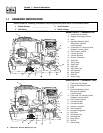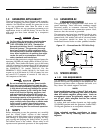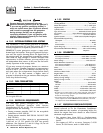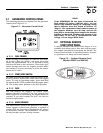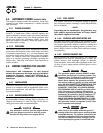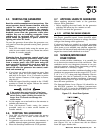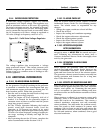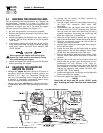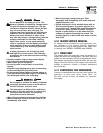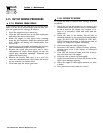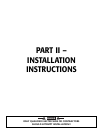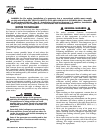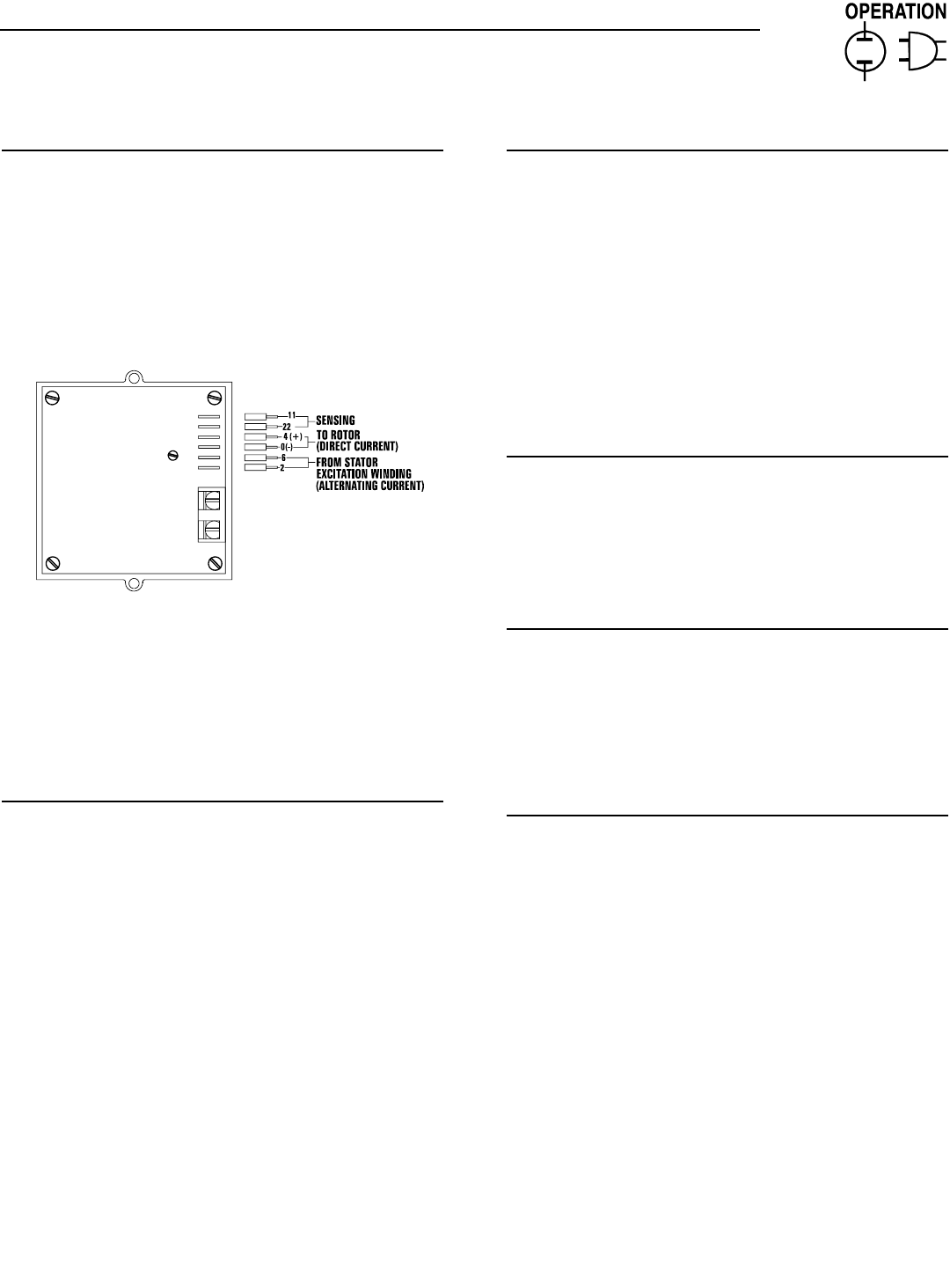
Generac
®
Power Systems, Inc. 11
Section 2 – Operation
PRIMEPACT 50 Recreational Vehicle Generator
2.9.4 OVERVOLTAGE PROTECTION
A solid-state voltage regulator (Figure 2.6) controls
the generator’s AC output voltage. This regulator sup-
plies an excitation current to the rotor. By regulating
the rotor’s excitation current, the strength of its mag-
netic field is regulated and, in turn, the voltage deliv-
ered to connected electrical loads is controlled. When
the AC frequency is 60 Hertz, voltage is regulated at
120 volts (voltage-to-frequency ratio is 2-to-1).
Figure 2.6 – Solid State Voltage Regulator
The voltage regulator also incorporates a “voltage
surge protection circuit.” This circuit prevents trou-
blesome surges in the generator AC output voltage.
Voltage surge is a common cause of damage to elec-
tronic equipment.
2.10 ADDITIONAL INFORMATION
2.10.1 25-HOUR BREAK-IN PERIOD
The first 25 hours of operation is the break-in period
for the generator. Properly breaking in the generator
is essential to minimize fuel consumption and pro-
vide maximum engine performance. During this 25-
hour break-in period, follow this procedure:
• Run the unit at varying electrical loads to help seat
the engine piston rings properly.
• Check the engine oil level frequently. Add oil if
needed. It is normal for the generator engine to
consume more oil than is normal until the piston
rings have properly seated.
• For the 75-hour operation following the break-in
period, avoid light electrical loads. Load the
generator at 50 percent (or more) of its rated
wattage capacity. Repeated light loads during these
75 hours can cause improper seating of engine pis-
ton rings, resulting in blowby and high oil con-
sumption.
• After operating the unit for 25 hours, complete the
tasks recommended under Section 2.10.2.
2.10.2 25-HOUR CHECK-UP
After the 25-hour break-in period, contact a Generac
Authorized Service Dealer for the following mainte-
nance. The vehicle owner is responsible for any
charges:
• Change the engine crankcase oil and oil filter.
• Check the oil level.
• Inspect the cooling and ventilation openings.
• Check the engine carburetor adjustments.
• Check the engine ignition system.
• Inspect the entire electrical system.
• Inspect the engine exhaust system.
2.10.3 ATTENTION REQUIRED
AFTER SUBMERSION
If the recreational vehicle generator has been sub-
merged in water, it MUST NOT be started and oper-
ated. Following any submersion in water, have a
Generac Authorized Service Dealer thoroughly clean
and dry the generator.
2.10.4 OPERATION IN HIGH GRASS
OR BRUSH
Never operate the generator while the vehicle is
parked over high grass, weeds, brush, leaves or any
other combustible substance. Such materials can
ignite and burn from the heat of the exhaust system.
The generator exhaust system becomes extremely hot
during operation and remains hot for a long time
after it has shut down.
2.10.5 EFFECTS OF MOISTURE AND DIRT
Keep the generator set as clean and dry as possible.
Protect the unit against excessive dust, dirt, corrosive
vapors, road splash, etc. Permitting dirt and mois-
ture to accumulate on generator windings will have
an adverse effect on the insulation resistance of those
windings.
When moisture is allowed to remain in contact with
windings, some of the moisture will be retained in
voids and cracks in the insulation. This causes a
reduced insulation resistance and will eventually
cause problems. Dirt will make the problem worse,
since dirt tends to hold moisture in contact with
windings. Salt (as from sea air) also will worsen the
problem since it tends to absorb moisture from the
air. Salt and moisture, when combined, form a good
electrical conductor.
◆
◆
◆
◆
◆
◆




